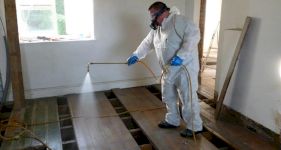LVT Flooring Cost
- The average cost of LVT flooring is around £1,100 in the UK.
- Installing LVT flooring typically takes between 1 – 2 days to complete.
- A breakdown of how much LVT flooring costs, including LVT prices per m² and vinyl flooring labour costs in 2024.
- What impacts LVT installation costs, what vinyl floor fitting involves, and how long this type of job tends to take.
- How to find and hire a professional LVT flooring fitter near you.
Looking into how much LVT flooring costs in the UK?
In 2024, the average cost of LVT flooring installation is around £1,100. This includes LVT flooring prices, as well as typical LVT fitting costs.
So, how can this LVT cost guide help you?
In this guide, we breakdown everything you need to know — including LVT prices per m², LVT fitting costs, what impacts the cost of LVT flooring installations, and much more!
Ready to get a quote?
MyJobQuote can connect you with local LVT floor fitters who can give you an accurate LVT fitting cost. It's quick, easy, and FREE.
Want more information about LVT and vinyl flooring costs first?
Read our comprehensive guide below!

£1,100
Table of Contents
- How Much Is LVT Flooring?
- What Is the Cost of LVT Flooring?
- Additional LVT Flooring Costs
- LVT Flooring Labour Costs and Timescales
- What Impacts LVT Flooring Costs?
- What's Involved in an LVT Flooring Installation?
- Can I Lay LVT Flooring Myself?
- Building Regulations & Planning Permission For LVT Flooring
- Types of LVT Flooring
- Checklist: Hiring Contractors to Install LVT Flooring
- FAQs
- Sources
How Much Is LVT Flooring?
So, how much does it cost to install LVT flooring in the UK?
The prices for LVT flooring will vary depending on the quality of the materials. You can expect to pay around £15 – £25 per m² for low-end LVT flooring. If you want mid-quality LVT flooring, this will cost around £25 – £40 per m², and if you would like high-end quality LVT flooring, this will cost around £40 – £60 per m².
Some other things that may affect the cost of this type of work will include the size of the area — the larger the room, the more materials you will need and the longer the job will take, so, therefore, the total LVT flooring cost will be higher.
Also, your location will affect the overall LVT installation cost. Those based in the London area will pay more for a professional to do this type of work than those who are based in other parts of the UK.
What are the most family-friendly types of flooring?
LVT Flooring Prices
The table below shows the average cost of LVT flooring installation cost that you can expect to pay.
| Job Description | Avg. LVT Flooring Cost Per M² |
|---|---|
| Low-End LVT Flooring Fitting Cost | £15 - £25 per m² |
| Mid-End LVT Flooring Fitting Cost | £25 - £40 per m² |
| High-End LVT Flooring Fitting Cost | £40 - £60 per m² |
What Is the Cost of LVT Flooring?
If you plan to install the LVT flooring yourself, you may only be interested in understanding what LVT flooring prices are. In other words, the cost of the LVT flooring tiles without incorporating the vinyl flooring labour costs.
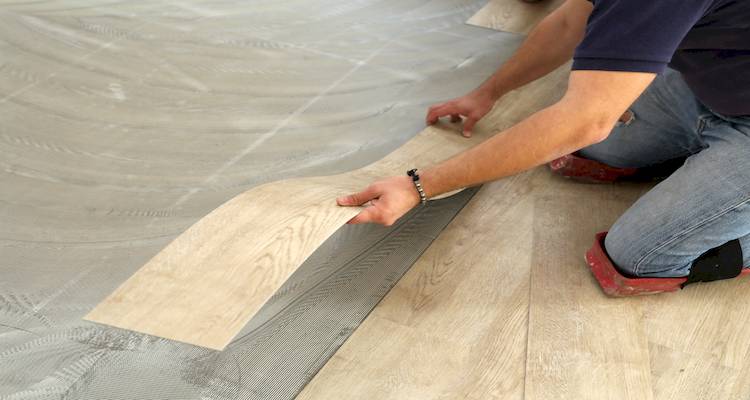
As we have mentioned above, the price you pay for LVT flooring will depend on the quality of the materials.
Low-end LVT flooring tiles will cost around £3 - £15 per m². Mid-range LVT floor tiles cost between £15 - £25 per m² and high-end LVT flooring tiles cost about £25 - £40 per m².
What flooring is best for dogs?
Additional LVT Flooring Costs
Several additional costs may come with installing LVT flooring. Below is a list of the additional things you may need to budget for with this type of work.
Underlay Installation Cost
It is important to install underlay under your new flooring to ensure it doesn't sink or shift. Underlay isn't usually too expensive. However, the prices can range depending on the quality of the underlay and the amount that you need.
On average, you can expect to pay around £3 – £8 per m² for LVT flooring underlay.
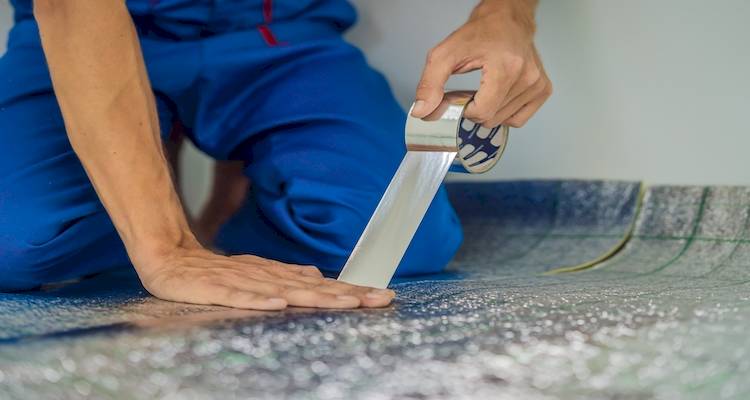
Waste Removal Cost
Most LVT flooring fitters will provide waste removal as part of the job. However, in some cases, they may not. If you need to hire someone separately to take care of the waste removal of your old flooring, then you can expect to pay around £100 - £150 for this type of work.
Alternatively, you could consider hiring a skip to remove any waste that's generated. Skip hire prices are typically around £220, but the cost of skip hire is dependent on the size of the skip that you need, the length of time you need it for, and where you're located in the UK.
Fitting Skirting Boards
While you're getting your new flooring fitted, you may also want to consider installing some new skirting boards to further improve the room's look and completely finish off the flooring space.
Installing skirting boards will usually take around half a day or may take up to a day to complete, depending on the size of the room. On average, skirting board costs between £150 - £200 for an average medium-sized room — which is based on a typical cost of around £30 per m².
Painting and Decorating
As well as installing new flooring, you may also be interested in painting or decorating the room to further improve its appearance. While you can decorate it yourself as a DIY project, many people prefer to hire a professional to take care of this type of work.
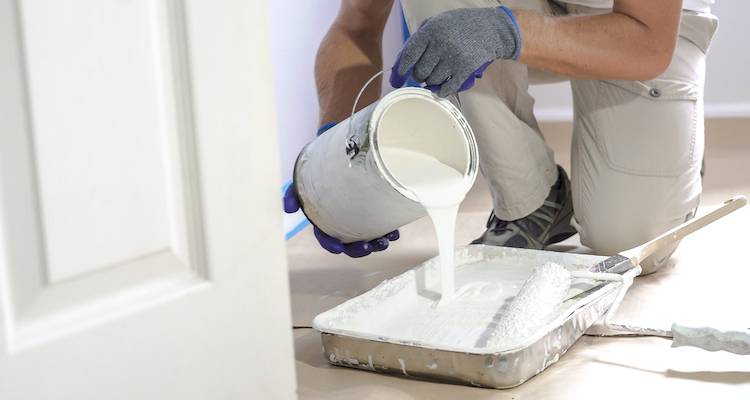
The average cost to paint a room is between £400 – £700 for a room that's between 15m² – 25m².
The exact cost will depend on the type of finish you're looking for, your location in the UK, the size of the room you're decorating, and whether it's an unusual space.
LVT Flooring Labour Costs and Timescales
Most contractors will be able to provide the supplies for you when it comes to installing LVT flooring. However, in some cases, you may prefer to source the supplies yourself and then hire a contractor to carry out the installation for you.
In this section, we will go over the prices that you can expect to pay for the labour side of installing LVT flooring. The average cost that you can expect to pay for a flooring fitter is around £150 – £200 per day.
Is LVT with integrated underlay any good for uneven floors?
However, the price that you pay will depend on several factors. For example, if you are located in or around the London area, you can expect to pay a contractor more than if you are located in the North or different areas of the UK.
Depending on the size of your floor, you can expect this type of work to take around 1 – 2 days for an average-sized room. If you have a larger room or if you are planning on installing LVT flooring in more than one room, then the work may take a few extra days to complete.
What Impacts LVT Flooring Costs?
Several factors can affect the overall cost of installing LVT flooring. Below is an overview of the things that may affect the price of this type of work.

LVT Flooring Quality
The quality of the flooring can affect the overall cost of the job. Higher quality materials will cost more, which will increase the overall cost of the job.
There are many different types of LVT flooring tiles, and each of these comes at a different price point. For instance, Karndean flooring costs up to £50 per m², as it's a premium LVT flooring brand.
It's a good idea to have a budget in mind before you start searching for your chosen flooring so that you don't end up overspending.
We are building an open-plan kitchen and diner and are looking for a good quality vinyl floor. Do you have any luxury vinyl floor recommendations?
Size of the Room
The size of the room will also affect the overall cost of the job. The larger the room is, the longer it will take to install the LVT flooring. This means that the labour costs will be higher for larger rooms. Also, larger rooms will require more materials than smaller rooms, which can also affect the job's overall cost.
Location of Your Property
The location of your property will play a part in the price you pay to lay LVT flooring. People who are based in and around the area of London can expect to pay more for the work than those based in the North or other parts of the UK. This is true for all types of home improvement jobs in this area.
What's Involved in an LVT Flooring Installation?
If you are planning on installing the LVT flooring tiles yourself, then you may be interested in learning the process that is involved with this type of work.
Below is an overview of the steps you need to take when laying LVT flooring.
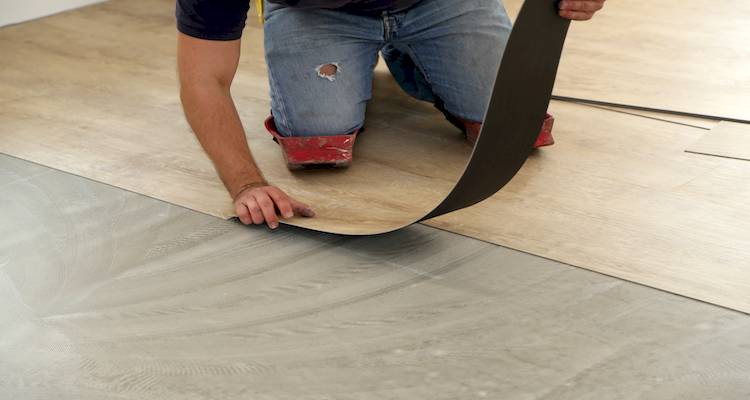
Preparation
Before you can fit your LVT flooring, you will need to prepare for the job. Below is a list of things you need to do to prepare for this type of work.
- You must prepare the room ready for laying the flooring tiles. Remove everything from the room and ensure that the floor is level. If it isn't, you may need to fill some areas or sand some areas down to make it level.
- Next, you will need to acclimatise your flooring boards. Simply put the flooring boards in the room around 48 hours before the installation and leave them there. This will allow them to expand or contract to the appropriate size for the room before you lay them.
- The final preparation step involves laying the underlay. This is an important step to ensure your flooring tiles stay in place and are protected.
Fitting The LVT Flooring Tiles
Now, we will go over the steps you'll need to take when laying the LVT flooring tiles. This method applies to click LVT flooring.
- The first step involves familiarising yourself with the flooring tiles. The longer side of the tile is commonly referred to as the female side, and the shorter side is often referred to as the male side. Start by placing the male side against the wall, and the female side should be away from the wall. Be sure to use spacers to set an appropriate gap between the tiles and the wall.
- Once your first tile is in place, add another one with the end joints first. Insert this into the male clicking system and apply some pressure so that the joint goes flat. When you create your arrangement, try to use half planks in the rows to make the arrangement look as natural as possible.
- When you reach the final plank, it will usually need to be cut to size. Use a ruler and measure the gap between the second-to-last plank and the wall. Don’t forget to use the spacer when making these measurements.
- Use a Stanley knife to score across the surface of the plank at your desired measurement. Be sure to use a straight edge to ensure the score is straight. You should now be able to make a clean break in the tile.
- After the first row is complete, you can begin to click the longer side of the second row into place and secure it to the first row.
- Once your first tile on the second row is in place, fit the second tile by positioning the female side so that the female click system is overlapping with the male clicking system of the previous row. Then, put the tile down and fit the click systems together.
- Continue to press and click the tiles into place. Go from left to right and work row by row.
- When you get to the final row, you may have to cut each of the tiles to size so that they fit between the second-to-last row and the wall. When measuring, don’t forget to use your spacers.
- Cut your final planks to size with the same method mentioned earlier. Always cut the left side as you will need the right side to click into place with the previous row.
- Finally, remove all of your spacers and you are done.
Can I Lay LVT Flooring Myself?
It is possible to install LVT flooring yourself. As long as you have some basic DIY skills and you possess the materials and tools needed to complete the work, it is very possible to do this job yourself.
However, if you're at all worried about the process or if you are doubting your DIY skills at all, it's best to leave this type of work to the professionals.
If you don't complete the work properly, you may damage your flooring, or you may find that the boards become loose or crack over time. This may mean that you'll end up paying much more for the work than if you were to just hire a contractor to complete it for you.
LVT flooring brands seem to vary a lot with wear layers. What depth of wear layer would you say is suitable for a family kitchen?
For the best results, it's always best to leave this type of work to a professional floor fitter. This type of contractor will have experience, skills and knowledge associated with fitting this type of flooring, so you can rest assured knowing that the job will be done right and to a high standard.
Building Regulations & Planning Permission For LVT Flooring
When it comes to fitting a new LVT floor in your home, you may be interested in learning about the rules surrounding this type of work – particularly in terms of the planning permission and building regulations rules.
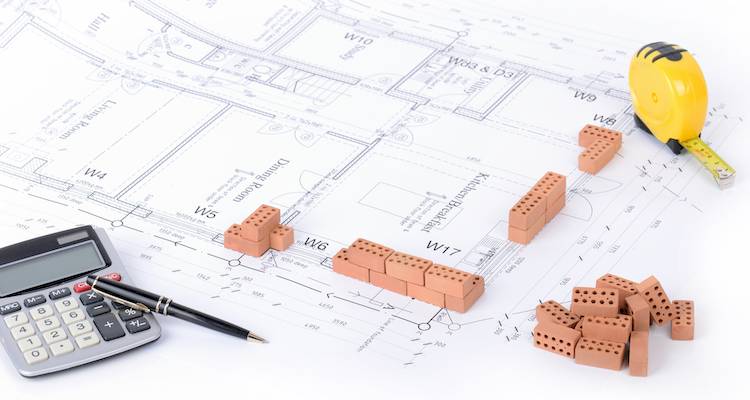
You may be happy to learn that you won't need to worry about building regulations or to planning permission when installing LVT flooring. This is simply a home improvement job, and these types of local authority approvals do not apply.
Types of LVT Flooring
LVT flooring tiles come in two main designs: wood-effect and stone-effect tiles.
LVT flooring is designed to be an alternative to stone or hardwood floors, so the tiles come in many variations of these two types.
Below is some information on these two different types of LVT flooring.
Wood Effect LVT Flooring
Wood-effect LVT flooring is designed to imitate hardwood flooring. With so many different types of hardwood flooring options on the market, there are also many different wood-effect LVT flooring options available.
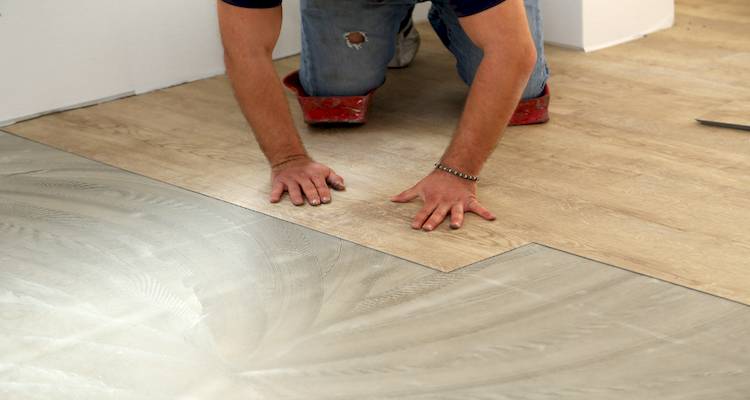
The designs vary in shades, patterns, and colours to imitate the exact type of wood flooring that they are supposed to look like. For example, pine flooring comes in quite light and natural shades, which can add a lot of warm light to a room.
So the LVT pine flooring reflects this. Some other types of wood, such as Cherry wood, is richer and darker in colour. This means that LVT cherry flooring is designed to look the same way.
Wood-effect LVT flooring is very popular as it allows you to achieve the aesthetical benefits of wood flooring without any of the negatives that come with owning wood flooring.
Stone Effect LVT Flooring
There are many different types of stone shades, patterns, and colours when it comes to natural stone materials. With this in mind, there are many different variations of stone-effect LVT flooring tiles. You can get grey, brown, black, and white LVT flooring, among many other colours.
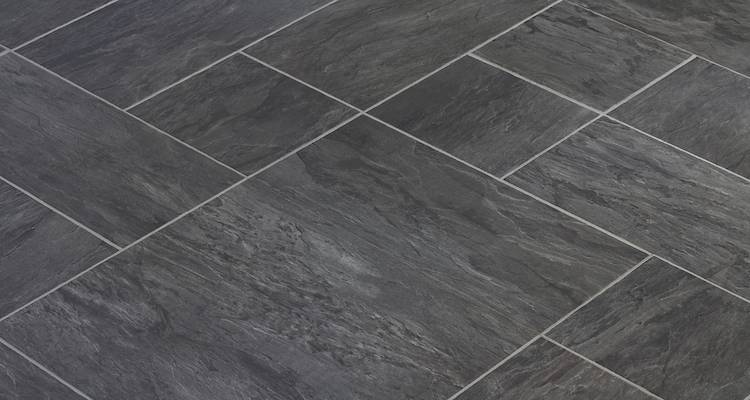
You can find light-coloured stone-effect LVT floor tiles that add a lot of natural light to a room, or you can find darker LVT stone floor tiles to add a much more dramatic effect to the room.
You can find these different styles and colours of floor tiles in all different application methods. Thicker versions provide a softer feeling under the foot. Stone-effect LVT flooring is perfect for rooms such as the bathroom and kitchen.
Checklist: Hiring Contractors to Install LVT Flooring
When you decide that you want to install LVT flooring in your home, you’ll need to find the right contractor for the job. Below, we have provided a list of the questions that you should consider asking when finding the right contractor for this type of work.
- Does the contractor have any qualifications that relate directly to installing LVT flooring?
- What type of equipment will the contractor use to complete the job? Will they use the correct type of equipment? Do you need to provide any equipment?
- Does the contractor have any type of insurance for the work? You should look out for contractors who hold insurance that covers property damage, personal injuries, and a work guarantee
- How much experience does the contractor have in fitting LVT flooring? Can the contractor provide any testimonials or evidence of their previous work? Can they provide any photos of previous work?
- Does the contractor provide any guarantees with their work? How long does the guarantee last? What issues, if any, are covered under this guarantee? Will the contractor fix any issues that come up?
- How long in total will the work take to complete?
- Will there be more than one contractor working on the job?
- Is there anything that you need to do to prepare for the job?
- Will the contractor take care of any waste removal that may be needed as part of the job, or do you have to take care of the waste removal yourself?
FAQs
What is LVT flooring?
This is quite a new product and is one of the fastest-growing types of flooring on the market. They are very popular in rooms where water is present such as the kitchen or bathroom.
How do you clean LVT flooring?
It is recommended that you clean LVT flooring around once or twice a week, depending on how much the floor is used. Always aim to clean up spills as soon as they happen to stop them from setting.
Can LVT flooring be cut?
Can I install LVT flooring in any room of the house?
What are the different fitting methods for LVT flooring?
What is LVT herringbone flooring?
Sources
https://www.karndean.com/en-gb/floors/about-us
https://www.eandmservices.com/karndean-luxury-vinyl-flooring/
https://www.afloor.co.uk/blog/how-to-install-lvt-flooring/
https://www.bricoflor.co.uk/blog/4-types-vinyl-tiles-planks-lvt-choose-right-ones
https://www.toppstiles.co.uk/knowledge-base/how-to-clean-lvt-flooring


